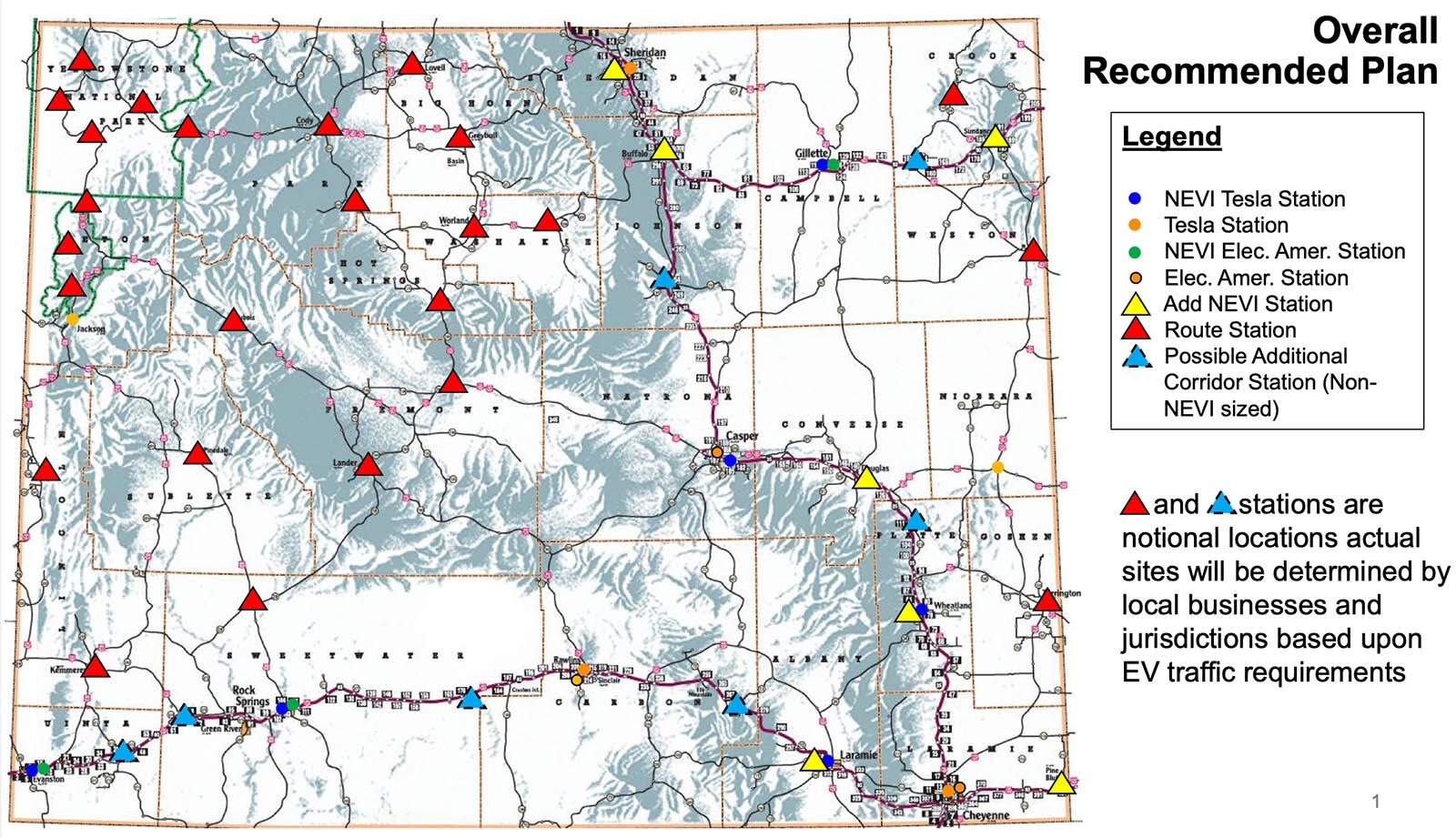By Kevin Killough, energy reporter
kevin@cowboystatedaily.com
The Federal Highway Administration has given a green light to Wyoming’s electric vehicle infrastructure plan, which will provide more than $26 million to build charging stations for electric vehicles over the next five years.
Even so, the feds denied eight of 11 requested exemptions to a federal rule of having charging stations at least every 50 miles.
With about 0.1% of vehicles registered in Wyoming being electric, the stations would mainly serve out-of-state tourists, such as those coming from Colorado, where 16% of all new vehicle sales are EVs.
Likewise, California has mandated that all new vehicles sold in the state need to be electric by 2035. More than a dozen other states have passed similar zero-emission vehicle programs.
Open Roads
The federal guidelines for the National Electric Vehicle Infrastructure (NEVI) program didn’t take into account sparse, rural populations. They require stations to be placed every 50 miles with a maximum of 1 mile from an interstate exit.
The requirements don’t fit well with Wyoming’s highways, where there can be long stretches between towns, state officials have said. So, the plan the Wyoming Department of Transportation submitted requested 11 exemptions from the requirements. The feds approved only three exemptions.
Among the exemptions to the 50-mile rule the WYDOT plan requested is for the stretch of Interstate 80 between Laramie and Rawlins.
“No infrastructure or amenities exist at the 50-mile point between Laramie and Rawlins,” the plan explains in its justification for requesting the exemption.
The feds refused the request without explanation.
Luke Reiner, WYDOT director, said the agency is still trying to get more details on the denials, and it “takes a little bit of time to track down the right person to figure that out.”
“There were other states that had some of these exceptions granted. Others did not,” Reiner said. “And so how to connect those dots, we were still in process trying to figure that out.”
Many of the exemptions WYDOT requested were based on a lack of infrastructure between 50-mile stretches.
Before the larger plan is implemented, the first phase of construction will install charging stations near Sundance, Buffalo, Douglas, Pine Bluffs, Sheridan, Wheatland and Laramie. The 2022 phase doesn’t require any exemptions. Reiner said that gives Wyoming some time to work with the feds on the denied exemptions to see if solutions can be found.
The first phase of construction “will take us a couple of years. So that gives us time to work on this exception issue,” Reiner said.
Goals and Challenges
The WYDOT plan notes that significant increases in EV traffic will need to happen on Wyoming highways to make charging stations viable.
According to the plan, the total non-Tesla EV traffic the state gets will need to increase by 100 times per day for NEVI stations to receive enough visits to cover their costs, if they are constructed every 50 miles of interstate.
While state mandates, as well as consumer interest, will push sales of EVs, the industry will face a number of challenges that could limit availability.
Some Roadblocks
Lithium is a key ingredient in EV batteries. There is now a single lithium mine operating in the U.S., and environmental regulations in the permitting process for a mine can take 10 years. Almost all lithium is imported, and the supply has failed to keep up with demand. Bloomberg reported in May that lithium prices had increased 500%.
While electric vehicle costs have declined, they still remain higher than gas-powered vehicles and are likely to go higher as supply chain issues drive up prices.
Gas Still King
Ford Motor Co. has stated a goal of reaching complete carbon neutrality and shifting to all-renewable energy by 2035. Yet, this week the company announced its F-Series Super Duty lineup of trucks for the 2023 model year. They all come with gas- and diesel-powered engines.
“Super Duty also is the preferred choice for essential industries with more than 50% market share in utility, mining, construction and emergency response vehicles, according to S&P Global Mobility,” the company states in an announcement on the models.
While the company is pushing to go electric, with $50 billion pledged to its EV buildout, Reuters reports that the F-Series generates a third of the Ford’s revenues.





